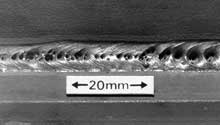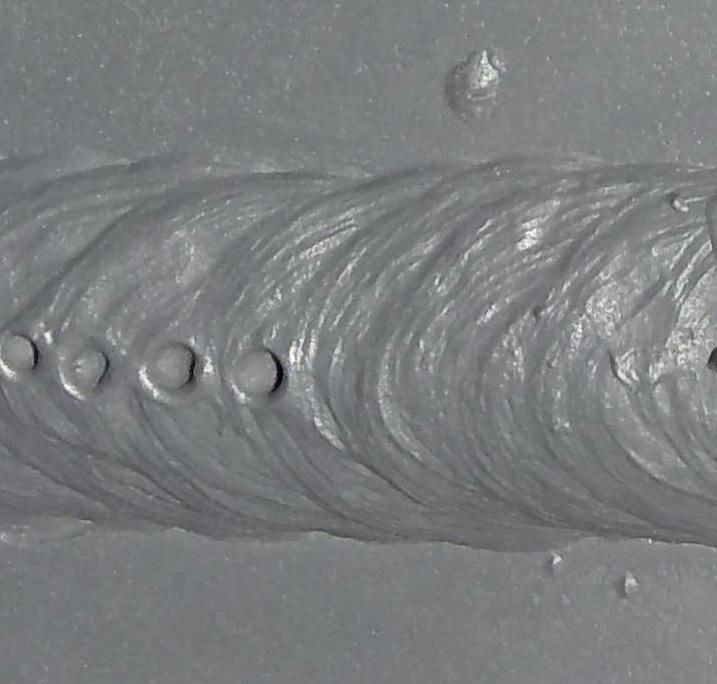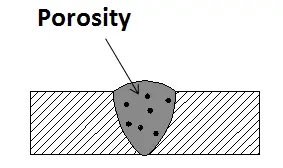Unraveling the Secret of Porosity in Welding: Tips for Decreasing Flaws and Taking Full Advantage Of Quality
In the intricate globe of welding, porosity remains a persistent challenge that can dramatically impact the top quality and honesty of bonded joints. Recognizing the elements that add to porosity development is important in the search of flawless welds. By untangling the enigma of porosity and implementing efficient strategies for problem reduction, welders can elevate the standards of their job to accomplish remarkable high quality results. As we explore the midsts of porosity in welding, discovering the keys to its avoidance and control will be extremely important for specialists looking for to master the art of premium weldments.
Understanding Porosity in Welding
Porosity in welding, a common issue run into by welders, describes the existence of gas pockets or spaces in the welded product, which can endanger the honesty and quality of the weld. These gas pockets are generally entraped throughout the welding procedure as a result of different factors such as inappropriate securing gas, polluted base products, or wrong welding parameters. The development of porosity can damage the weld, making it vulnerable to splitting and corrosion, eventually bring about structural failures.
By acknowledging the relevance of keeping appropriate gas shielding, making certain the sanitation of base materials, and optimizing welding setups, welders can significantly minimize the probability of porosity formation. Generally, a thorough understanding of porosity in welding is vital for welders to create top quality and resilient welds.

Common Causes of Porosity
When inspecting welding procedures for potential quality concerns, comprehending the typical causes of porosity is crucial for preserving weld stability and protecting against structural failings. Porosity, characterized by the existence of dental caries or voids in the weld steel, can substantially endanger the mechanical properties of a bonded joint.
Additionally, welding at incorrect criteria, such as excessively high travel rates or currents, can produce extreme turbulence in the weld pool, capturing gases and creating porosity. By attending to these typical causes with appropriate gas protecting, product preparation, and adherence to optimal welding specifications, welders can reduce porosity and boost the top quality of their welds.
Techniques for Porosity Prevention
Carrying out efficient safety nets is vital in decreasing the event of porosity in welding processes. One method for porosity avoidance is ensuring correct cleaning of the base metal prior to welding. Pollutants such as oil, oil, rust, and paint can result in porosity, so comprehensive cleaning utilizing ideal solvents or mechanical approaches is essential.

Another secret safety net is the selection of the ideal welding consumables. Making use of premium filler products and shielding gases that appropriate for the base steel and welding process can significantly lower the risk of porosity. In addition, maintaining proper welding parameters, such as review voltage, present, take a trip speed, and gas flow rate, is vital for porosity avoidance. Drifting from the advised settings can result in improper gas protection and insufficient blend, resulting in porosity.
Additionally, using appropriate welding strategies, such as maintaining a constant travel rate, electrode angle, and arc length, can aid protect against porosity (What is Porosity). Ample training of welders to ensure they comply with finest methods and quality assurance treatments is also important in minimizing porosity problems in welding

Finest Practices for High Quality Welds
One secret method is maintaining appropriate sanitation in the welding location. Thoroughly cleansing the work surface and bordering location prior to welding can help mitigate these concerns.
Another best technique is to meticulously choose the proper welding criteria for the specific products being joined. This consists of establishing the proper voltage, present, travel rate, and protecting gas circulation rate. Correct specification choice ensures optimum weld penetration, blend, and overall quality. Additionally, making use of high-quality welding consumables, such as electrodes and filler steels, can substantially impact the final weld high quality. Spending in premium consumables can lead to more powerful, a lot more durable welds with less defects. By adhering to these ideal methods, welders can constantly create premium welds that meet sector standards and go beyond consumer assumptions.
Relevance of Porosity Control
Porosity control plays a vital duty in ensuring the honesty and quality of welding joints. Porosity, characterized by the visibility of dental caries or voids within the weld metal, can significantly compromise the mechanical homes and architectural stability of the weld. Extreme porosity weakens the weld, making it much more prone to splitting, deterioration, and general failing under functional loads.
Efficient porosity click here for more control is crucial for preserving the wanted mechanical properties, such as stamina, ductility, and durability, of the welded joint. What is Porosity. By reducing porosity, welders can boost the overall high quality and integrity these details of the weld, making sure that it fulfills the efficiency demands of the desired application
Moreover, porosity control is essential for accomplishing the wanted aesthetic look of the weld. Too much porosity not only damages the weld yet additionally detracts from its visual allure, which can be crucial in sectors where aesthetics are vital. Correct porosity control techniques, such as using the right securing gas, regulating the welding specifications, and ensuring appropriate cleanliness of the base products, are essential for producing top notch welds with marginal defects.

Verdict
In final thought, porosity in welding is a typical flaw that can compromise the high quality of the weld. It is vital to manage porosity in welding to ensure the integrity and toughness of the final item.